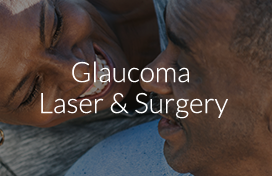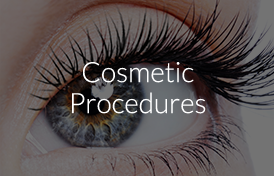FAQs
-
Q: My eyes don’t hurt and my vision is clear. Why should I have an eye exam?Regular eye exams are an invaluable tool in maintaining your eyes’ health by detecting and preventing disease. Some diseases, such as glaucoma, develop gradually without causing pain or vision loss – so you may not notice anything wrong until significant and irreversible damage has been done. Early detection of any problems can allow for a choice of treatment options or prevent further harm.
-
Q: What is glaucoma? Am I at risk?
Glaucoma is one of the leading causes of blindness in the United States. It occurs when the pressure inside the eye rises high enough to damage the optic nerve. Symptoms include blurred vision, loss of peripheral vision, halo effects around lights and painful or reddened eyes. Testing by an ophthalmologist or optometrist can detect glaucoma before symptoms appear and begin treatment to prevent vision loss.
People at greatest risk for developing glaucoma include those who are over 40, diabetic, near-sighted, African-American, or who have a family history of glaucoma.
-
Q: What are the symptoms of macular degeneration?
Macular degeneration occurs when the center of the retina degrades, causing a progressive loss of vision. Symptoms include:
- A gradual loss of ability to see objects clearly
- A gradual loss of color vision
- Distorted vision
- A dark or empty area appearing in the center of vision
There are two kinds of macular degeneration: “wet” and “dry.” The “wet” form can be treated in its early stages. Regular eye exams are highly recommended to detect macular degeneration early and prevent permanent vision loss.
-
Q: What is a cataract? Who is at risk for developing them?
A cataract is a cloudy area in the normally clear lens in the front of the eye. Cataracts aren’t painful, but they do cause symptoms, including:
- Blurred/hazy vision
- Spots in front of the eye(s)
- Sensitivity to glare
- A feeling of “film” over the eye(s)
People at risk for developing cataracts include those who are over 55, have had eye injuries or disease, have a family history of cataracts, smoke cigarettes or use certain medications.
-
Q: How are cataracts treated?Vision loss from cataracts can often be improved with prescription glasses and contact lenses. For people who are significantly affected by cataracts, replacement surgery may be the preferred method of treatment. Cataract replacement is the most common surgical procedure in the country. During this procedure, the cloudy lens is removed and replaced with an artificial one called an intraocular lens or IOL.
-
Q: What is diabetic retinopathy and how is it treated?Diabetic retinopathy is a complication of diabetes that weakens the blood vessels that nourish the retina. Vision can be lost if these weak vessels leak, swell or develop thin branches. In its advanced stages, diabetic retinopathy can cause blurred or cloudy vision, floaters and blind spots – and, eventually, blindness. This damage is irreversible. However, treatment can slow disease progression and prevent further vision loss. Treatment modalities include laser and surgical procedures.
-
Q: Can diabetic retinopathy be prevented?Yes. People with diabetes are most susceptible to developing it, but your risk is reduced if you follow your prescribed diet and medications, exercise regularly, control your blood pressure, and avoid alcohol and cigarettes. Regular eye exams are an integral part of making sure your eyes remain healthy.
-
Q: What are the symptoms of dry eye and how is it treated?
“Dry eye” often occurs during the natural aging process. It can also form as a result of eyelid or blinking problems, certain medications such as antihistamines and oral contraceptives, climate (low humidity, wind, dust), injury, and various health problems such as arthritis.
Symptoms include:
- Irritated, scratchy, dry, uncomfortable or red eyes
- A burning sensation or feeling of something foreign in your eyes
- Blurred vision
In addition to being uncomfortable, dry eye can damage eye tissue, scar the cornea and impair vision. Dry eye is not preventable, but it can be controlled before harm is done to your eyes.
Treatment can take many forms. Non-surgical methods include blinking exercises, increasing humidity at home or work, and use of artificial tears or moisturizing ointment. If these methods fail, small punctal plugs may be inserted in the corners of the eyes to limit tear drainage, or the drainage tubes in the eyes may be surgically closed.
-
Q: How does LASIK work?LASIK changes the way light is bent, or refracted, as it passes through the cornea so that it focuses properly on the retina and objects can be seen clearly. A device called a microkeratome cuts a thin flap in the surface of the cornea. An excimer laser beam then reshapes the cornea’s curvature to improve vision. The flap is then closed and covered with a protective contact lens.
-
Q: How long does the procedure take, and how long is recovery?The entire procedure takes only 15-30 minutes per eye, and patients are often ready to leave within an hour or two. The flap heals on its own within a few days with no need for stitches.





